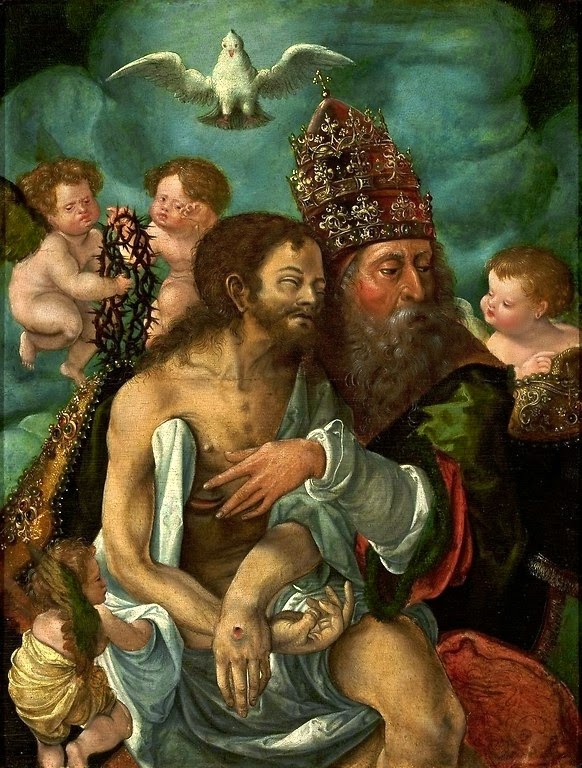 |
| Georg Pencz, Holy Trinity (c. 1530) |
“God is love.” We’ve heard this repeatedly, but have we stopped to consider what it really means?
It’s an invitation to know and love God. We see a hint of this invitation in today’s First Reading from Exodus 34 in which God describes Himself as “The LORD, the LORD, a merciful and gracious God, slow to anger and rich in kindness and fidelity.” And we see this invitation in its fullness in today’s Gospel, with the famous line from John 3:16, “God so loved the world that he gave his only Son, so that everyone who believes in him might not perish but might have eternal life.” This is an invitation to enter into a deeper relationship with the God who is Love.
But there’s another aspect as well. We believe that God is Love. Not just that God loves, but that He is Love. That’s what makes today’s Solemnity of the Most Holy Trinity so important. Buried within the statement that “God is love” is a profound truth about the Trinitarian nature of God. As the philosopher Peter Kreeft has said, “If God is not a Trinity, God is not love. For love requires three things: a lover, a beloved, and a relationship between them. If God were only one person, he could be a lover, but not love itself.”
So to preserve the doctrine that “God is love,” we must have clear thinking about the Trinity. This isn’t easy, since the Trinity is unlike anything we encounter in human experience. Often, we oversimplify the Trinity by thinking of the Father, Son, and Holy Spirit as different Beings. They’re not: the Three Persons are One Being. Or we’ll make the opposite mistake, by imagining that “Father,” “Son,” and “Holy Spirit” are just different names for God, or different roles that He plays. But this is wrong, too: the One Being really consists of Three Persons. Both of these formulations are rejected by the Church, and for good reason: they don’t match up with what Christianity reveals about God.
There are a lot of other mistakes that we can fall into: for example, thinking of God the Son or God the Holy Spirit as not-quite-God, or as somehow inferior to God the Father; or thinking of the Son or Holy Spirit as created.
Throughout history, one of the ways that the Church has combatted these errors is through the Creeds, which provide a statement of the Church’s beliefs, and a good diagnostic for us as believers. When we pray these Creeds, we declare that we believe what’s being taught. One of the most important Creeds to address the Trinity is the Athanasian Creed, which says that “there is one person of the Father, another of the Son, and another of the Holy Spirit. But the Godhead of the Father, of the Son, and of the Holy Spirit is all one, the glory equal, the majesty coeternal.” This is the faith of the Church, and it’s the teaching of Jesus Christ.

very beautiful, i like it!!!
I have a few files paintings
tranh chân dung
tranh vẽ bay
tranh sơn dầu
@Joe…great authorship on this small article! Very concise, well put together, and extremely poignant. For no matter how grand and great love is, it is absolutely nothing if it just kept to itself. Love, like the faith, is meant to be given away. Hence, the reason for the Holy Trinity. Three word summary of the Trinity: Reciprocity of Love.